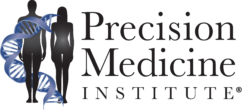Insights gleaned from recent cancer whole genome analysis in England add to knowledge of common versus rare signatures, revealing 58 new mutational patterns
University of Cambridge and Cambridge University Hospitals (CUH) researchers are calling their recent cancer mutation study the “largest of its kind” and one that improves on their earlier work. The related article published in an April 2022 edition of Science, titled, “Substitution Mutational Signatures in Whole-Genome-Sequenced Cancers in the UK Population,” explains more about the team’s recent analysis of more than 12,000 cancers.
Two details noted by the researchers are that for mutational signature analysis they used:
- Three large pan-cancer whole genome cohorts: the Genomics England Limited (GEL) version 8 cohort of the 100,000 Genomes Project, the ICGC cohort, and the Hartwig cohort; and
- 12,222 samples across 19 organs, performing independent signature extractions per organ for each cohort to identify single-base substitution (SBS) and double-base substitution (DBS) signatures independently in each organ.
This study targeted more than 12,000 NHS England patients, according to a NHS, CUH, NHS Foundation Trust news release.
A nearly 100-page downloadable supplement presents a graphic detailing of the signature extractions and summaries of signatures distribution for numerous types of cancer, including: breast cancer, ovarian cancer, kidney cancer, colorectal cancer, bone and soft tissue cancer, lung cancer, uterine cancer, central nervous system cancer, prostate cancer, bladder cancer, skin cancer, and myeloid cancer, among others.

Multiple Sources Probed for Clues to Signature Starting Points
“When you look at these cancers, you can start to see patterns,” explained Andrea Degasperi, PhD, for Pharmaceutical Technology. Degasperi is a research associate at the Early Cancer Institute and Department of Medical Genetics at University of Cambridge and first author of this study. “They tell us something happened in the past that generated these mutations, which could be something related to environmental risks.”
The project also called for genetically checking relatedness of samples (because some patients do have more than one sample in the 100,000 Genomes Project); seeking potential germline variants as a contributing cause for a signature; and going through somatic driver mutations. In many cases, medical records were searched for past medical histories, occupational exposures, and treatment histories.
“We show for each organ that cancers have a limited number of common signatures and a long tail of rare signatures, and we provide a practical solution for applying this concept of common versus rare signatures to future analyses,” states the Science article abstract.
Role of Whole-Genome Sequencing (WGS) in Understanding Cancer
The Cambridge study further demonstrates the role of whole genome sequencing (WGS) in better understanding cancer. Researchers say WGS can produce a total picture of mutations.
“With thousands of mutations per cancer, we have unprecedented power to look for commonalities and differences across NHS patients, and in doing so we uncovered 58 new mutational signatures and broadened our knowledge of cancer,” Degasperi explained for Cambridge Network News.
“Today, the resources required for WGS analysis have decreased substantially,” wrote the authors of a 2019 pre-COVID report on whole-genome sequencing in cancer. “Alongside a steady reduction in the cost of WGS, there have been improvements in the technologies for generating and processing quality raw data as well as the tools and companion datasets that contextualize findings for biological and clinical interpretation.”
Among the researchers noted in that Cold Spring Harbor Perspectives in Medicine report is Serena Nik-Zainal, MD, lead researcher of the Cambridge mutational signature study and professor of genomic medicine and bioinformatics.
Genetic Signatures to Identify Individual Cancers
Mutational signatures are groups or patterns of mutations that are normally associated with a specific causative factor. This yields insights into what causes cancerous genetic variations and can help lead to the development of potential treatment options.
“The reason it is important to identify mutational signatures is because they are like fingerprints at a crime scene—they help to pinpoint cancer culprits,” explained Nik-Zainal as part of the news release. “Some mutational signatures have clinical or treatment implications—they can highlight abnormalities that may be targeted with specific drugs or may indicate a potential ‘Achilles heel’ in individual cancers.”
Added Michelle Mitchell, Chief Executive of Cancer Research UK, “This study shows how powerful whole genome sequencing tests can be in giving clues into how the cancer may have developed, how it will behave and what treatment options would work best.”
Consider Patient Populations
The hope is to use the mutational clues seen in this study and apply them to the NHS patient population, with the ultimate aim of improving diagnosis and management of cancer patients.
For this study, the genomic data were provided by the 100,000 Genomes Project, an England-wide clinical research initiative and an extensive repository of research samples.
Challenges and Limitations
In the United States, studies also aim to expose mutational patterns of cancer and profile tumors in relation to cancer drivers. However, in “Tracing Lung Cancer Risk Factors Through Mutational Signatures in Never-Smokers,” published June 2021 in the American Journal of Epidemiology, authors noted that the use of WGS for the analysis of mutational signatures and tumor subclassification has several challenges and limitations.
“Many algorithms have been proposed to identify mutational signatures from a composite of genomic changes,” according to senior investigator Maria Teresa Landi, MD, PhD, and others. “However, they often lack consensus on analysis and result interpretation, their parameters can vary across tissue or cancer types, supervised fitting of signatures can lead to false results, and no recognized gold standard exists.”
The article goes on to suggest that the reduction in cost for sequencing technologies and the progress of analytical tools will advance epidemiologic investigation of risk factors for distinct cancers. So while mutational signature studies can take years to translate into actionable clinical insights, healthcare leaders may see precision medicine advancing more rapidly as projects across the globe begin to provide data.
—Caleb Williams
Related Information:
Big Genetic Study Reveals New Clues to the Causes of Cancer
Genomic Projects Exploit Scale as Clinical Applications Play Catch-Up
Substitution Mutational Signatures in Whole-Genome-Sequenced Cancers in the UK Population
Mutational Signatures: Emerging Concepts, Caveats and Clinical Applications
Tracing Lung Cancer Risk Factors Through Mutational Signatures in Never-Smokers
